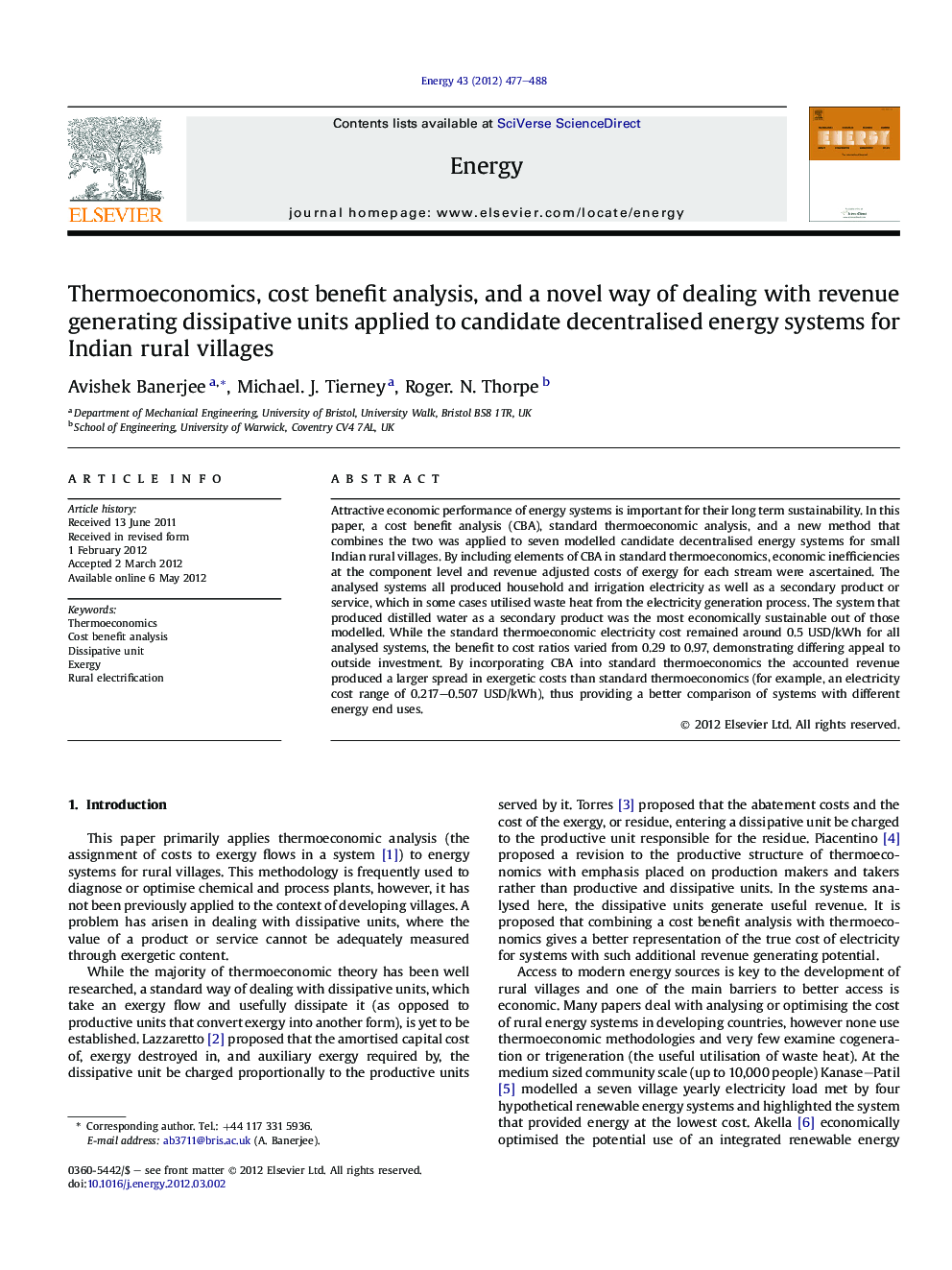| Article ID | Journal | Published Year | Pages | File Type |
|---|---|---|---|---|
| 1733788 | Energy | 2012 | 12 Pages |
Attractive economic performance of energy systems is important for their long term sustainability. In this paper, a cost benefit analysis (CBA), standard thermoeconomic analysis, and a new method that combines the two was applied to seven modelled candidate decentralised energy systems for small Indian rural villages. By including elements of CBA in standard thermoeconomics, economic inefficiencies at the component level and revenue adjusted costs of exergy for each stream were ascertained. The analysed systems all produced household and irrigation electricity as well as a secondary product or service, which in some cases utilised waste heat from the electricity generation process. The system that produced distilled water as a secondary product was the most economically sustainable out of those modelled. While the standard thermoeconomic electricity cost remained around 0.5 USD/kWh for all analysed systems, the benefit to cost ratios varied from 0.29 to 0.97, demonstrating differing appeal to outside investment. By incorporating CBA into standard thermoeconomics the accounted revenue produced a larger spread in exergetic costs than standard thermoeconomics (for example, an electricity cost range of 0.217–0.507 USD/kWh), thus providing a better comparison of systems with different energy end uses.
► Systems with different end uses can have comparable thermoeconomic costs, despite differing benefit to cost ratios. ► By expanding thermoeconomics to include a cost benefit analysis, the cost of exergy is affected by its end use. ► Revenue producing dissipative units can be handled using this combination of cost benefit analysis and thermoeconomics. ► Producing distilled water using waste engine heat can provide an economically attractive system.
